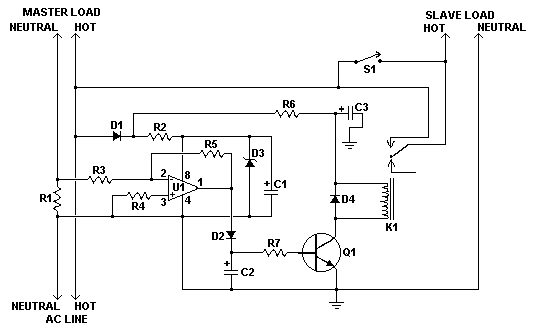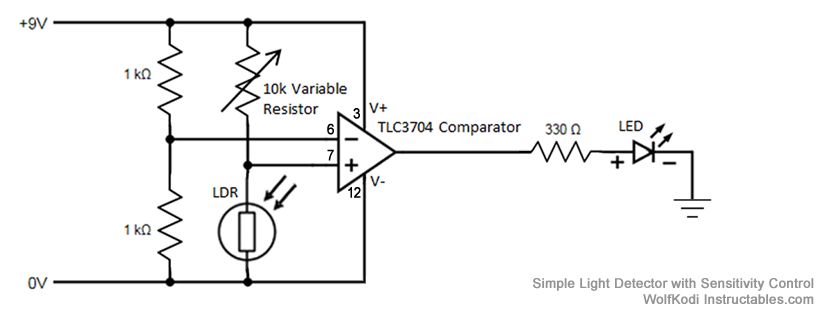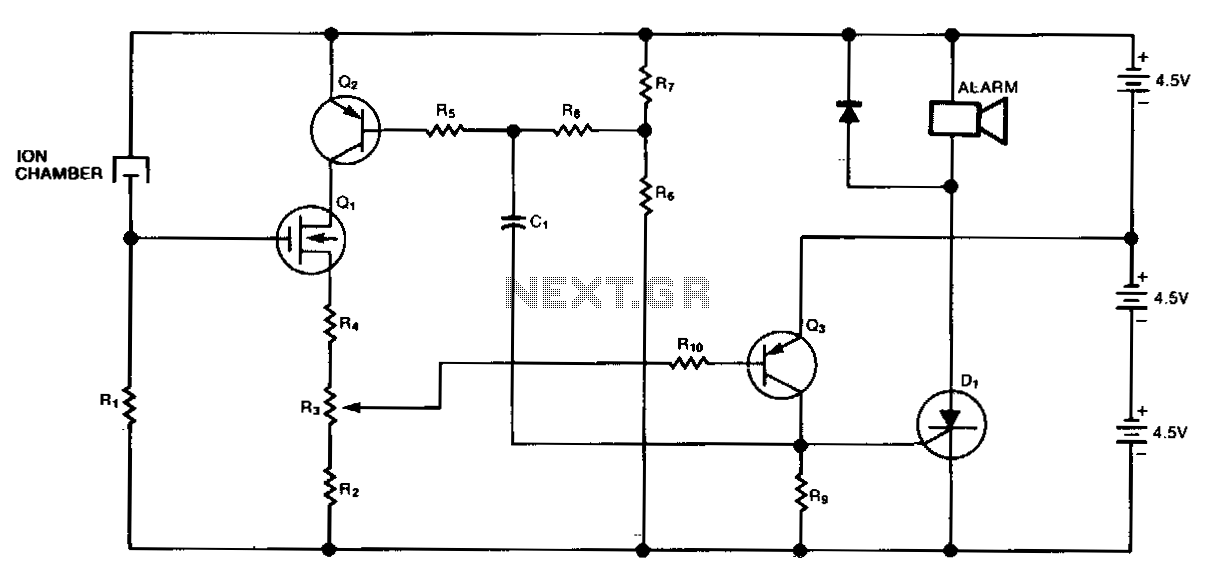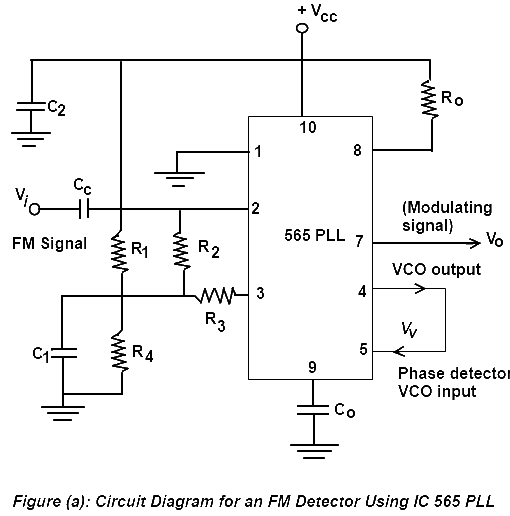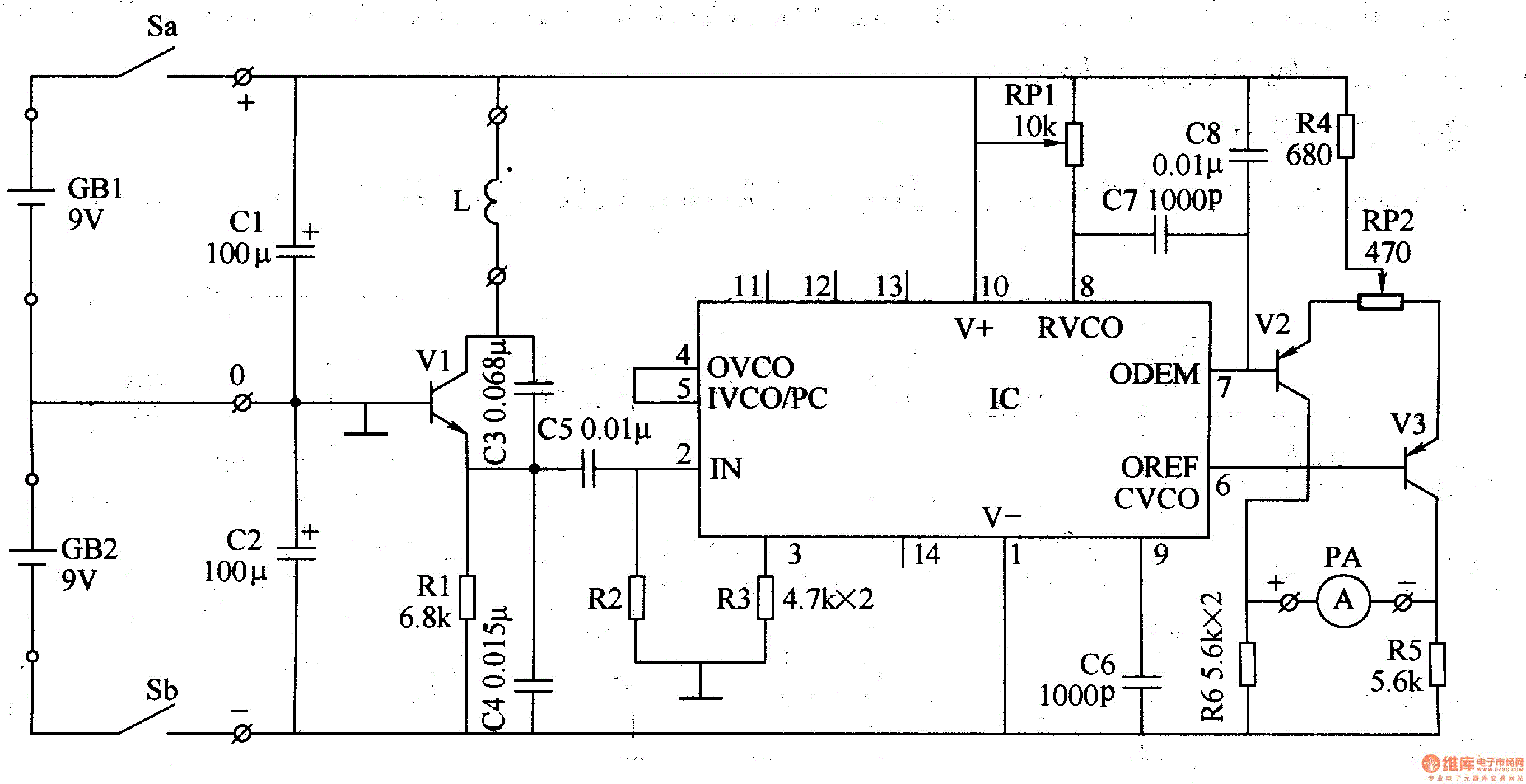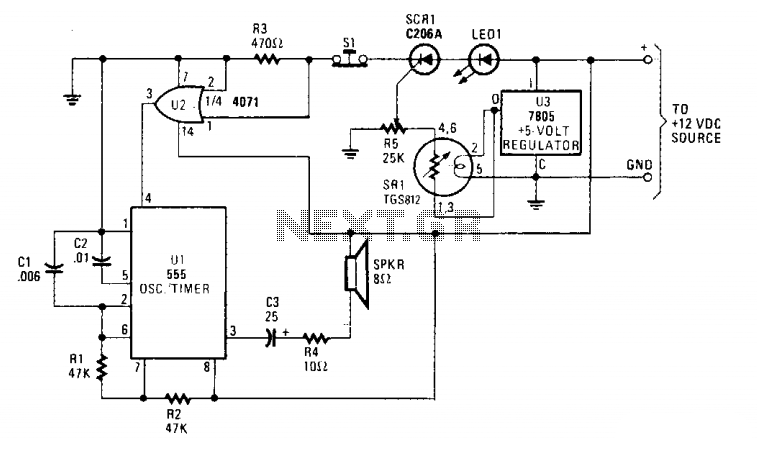
Acoustic Doppler Motion Detector
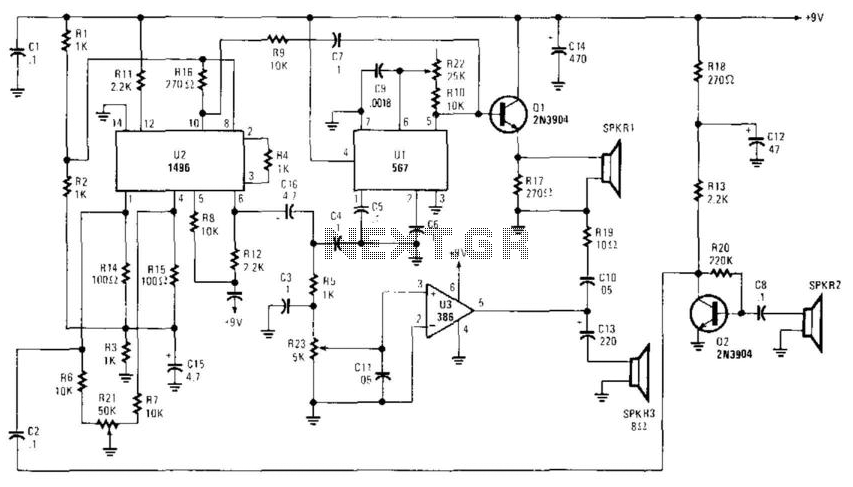
A high-frequency audio signal (15 to 25 kHz) generated by Ul is fed to buffer Ql and SPKR1. A portion is fed to balanced mixer U2. Received audio picked up by SPKR2 (used as a microphone) is amplified by Q2 and fed to U2. When sound is reflected from a moving object, the Doppler effect will cause an apparent shift in frequency. U2 produces a signal equal to the frequency difference. This is coupled via C16 and gain control R23 to amplifier U3, where the beat note is heard in SPKR3.
The described circuit involves a high-frequency audio signal operating within the range of 15 to 25 kHz, which is initially generated by component U1. The signal is then routed through a buffer stage represented by Q1, which ensures that the signal maintains its integrity and strength before being delivered to the speaker (SPKR1).
A portion of this high-frequency signal is directed to a balanced mixer (U2), which plays a crucial role in processing the audio signals. The circuit also incorporates SPKR2, which functions as a microphone to capture ambient audio. This captured audio is subsequently amplified by transistor Q2 before being fed into the balanced mixer U2.
An important aspect of this circuit is its ability to detect the Doppler effect, which occurs when sound waves are reflected off a moving object. This phenomenon results in a shift in the frequency of the reflected sound. The balanced mixer U2 is responsible for producing an output signal that corresponds to the frequency difference between the transmitted and received audio signals.
This output is then coupled through capacitor C16, which serves to block any DC component while allowing the AC signal to pass, and is adjusted by a gain control resistor R23. The adjusted signal is then sent to an amplifier stage (U3), where it is amplified further. The final output is delivered to a third speaker (SPKR3), where the beat note, representing the frequency difference induced by the Doppler effect, can be heard.
This circuit effectively demonstrates the principles of audio signal processing, frequency mixing, and the practical application of the Doppler effect, making it suitable for various audio and detection applications. A high-frequency audio signal (15 to 25 kHz) generated by Ul is fed to buffer Ql and SPKR1. A portion is f ed to balanced mixer U2. Received audio picked up by SPKR2 (used as a microphone) is amplified by Q2 and fed to U2. When sound is reflected from a moving object, the Doppler effect will cause an apparent shift in frequency. U2 produces a signal equal to the frequency difference. This is coupled via C16 and gain control R23 to amplifier U3, where the beat note is heard in SPKR3. 🔗 External reference
The described circuit involves a high-frequency audio signal operating within the range of 15 to 25 kHz, which is initially generated by component U1. The signal is then routed through a buffer stage represented by Q1, which ensures that the signal maintains its integrity and strength before being delivered to the speaker (SPKR1).
A portion of this high-frequency signal is directed to a balanced mixer (U2), which plays a crucial role in processing the audio signals. The circuit also incorporates SPKR2, which functions as a microphone to capture ambient audio. This captured audio is subsequently amplified by transistor Q2 before being fed into the balanced mixer U2.
An important aspect of this circuit is its ability to detect the Doppler effect, which occurs when sound waves are reflected off a moving object. This phenomenon results in a shift in the frequency of the reflected sound. The balanced mixer U2 is responsible for producing an output signal that corresponds to the frequency difference between the transmitted and received audio signals.
This output is then coupled through capacitor C16, which serves to block any DC component while allowing the AC signal to pass, and is adjusted by a gain control resistor R23. The adjusted signal is then sent to an amplifier stage (U3), where it is amplified further. The final output is delivered to a third speaker (SPKR3), where the beat note, representing the frequency difference induced by the Doppler effect, can be heard.
This circuit effectively demonstrates the principles of audio signal processing, frequency mixing, and the practical application of the Doppler effect, making it suitable for various audio and detection applications. A high-frequency audio signal (15 to 25 kHz) generated by Ul is fed to buffer Ql and SPKR1. A portion is f ed to balanced mixer U2. Received audio picked up by SPKR2 (used as a microphone) is amplified by Q2 and fed to U2. When sound is reflected from a moving object, the Doppler effect will cause an apparent shift in frequency. U2 produces a signal equal to the frequency difference. This is coupled via C16 and gain control R23 to amplifier U3, where the beat note is heard in SPKR3. 🔗 External reference
